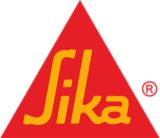Sikaflex® Construction AP+
Sikaflex® Construction AP+ is a 1-component, moisture curing polyurethane elastic joint sealant. It is used for durably sealing connection and movement joints in concrete and masonry facades and as a general purpose construction sealant.
- Excellent application properties for extrusion and tooling
- Movement capability of ± 25% (ASTM C 719)
- Bubble free curing technology
- Good adhesion to many substrates
- Non-sag on vertical and soffit joints up to 30 mm width
Usage
Sikaflex® Construction AP+ is used for sealing and weatherproofing joints in the building envelope and is used for the following applications.- Interior or exterior joint sealing
- Around window and door frames
- Around precast elements
- Around prefabricated elements
- Floor and wall construction joints
- Pavements, decks and bridges
Advantages
- Excellent application properties for extrusion and tooling
- Movement capability of ± 25% (ASTM C 719)
- Bubble free curing technology
- Good adhesion to many substrates
- Non-sag on vertical and soffit joints up to 30 mm width
Packaging
600 ml cylindrical foil pack
20 foil packs per box
Colour
Black, Concrete Grey, White
Product Details
SUSTAINABILITY
- Green Building Council of Australia Green Star Design & As Built V1.3-13.1.1B
- Green Building Council of Australia Green Star Interiors V1.3-12.1.1B
CERTIFICATES AND TEST REPORTS
- ASTM C 920 Class 25
Composition
Sika i-Cure® Polyurethane
Shelf life
12 months from the date of production
Storage conditions
The Product must be stored in original, unopened and undamaged sealed packaging in dry conditions at temperatures between +5 °C and +25 °C. Always refer to packaging.
Refer to the current Safety Data Sheet for information on safe handling and storage.
Density
| 1.25 kg/l |
Product declaration
| ASTM C 920-18 | Type S, Grade NS, Movement Class 25, Use M |
Shore A hardness
| ~35 (after 28 days) | (EN ISO 868) |
Secant tensile modulus
At +23°C and 60% elongation 0.30 N/mm2
Elastic recovery
| ~70% | (ISO 7389) |
Tear propagation resistance
| ~6.0 N/mm | (ISO 34-2) |
Movement capability
| ± 25% | (ASTM C 719) |
Service temperature
| Maximum | +70 °C |
| Minimum | −40 °C |
Joint design
For movement joints, the width must be at least 8 mm and should not exceed 40 mm. For non movement joints such as connection joints in interior areas, the joint width can be less than 8 mm.
The joint dimensions must be designed to suit the movement capability of the sealant. In all cases joints must be at least 8 mm deep, or have a width to depth ratio of 1 : 0.5 for facade joints or 1 : 0.80 for floor joints, which ever is greater.
For more information about joint design and calculations refer to the Sika document Design guideline: Dimensioning of construction joints or contact Sika Technical Services.
Application
Backing material
Use closed cell, polyethylene foam backing rod.
Sag flow
| 2 mm (20mm profile), tested at +50°C | (EN ISO 7390) |
Material temperature
| Maximum | +40°C |
| Minimum | +5°C |
Ambient air temperature
| Maximum | +40°C |
| Minimum | +5°C |
Substrate temperature
| Maximum | +40°C |
| Minimum | +5°C |
Note: The substrate temperture muust be +3°C above dew point temperature and free from frost and ice.
Curing rate
| 2mm / 24 hours | At +23°C and 50% R.H |
Skinning time
| 120 minutes | At +23°C and 50% R.H |
Tooling time
| 100 minutes | At +23°C and 50% R.H |
Consumption
| Joint width | Joint depth | Joint length per 600 ml |
| 10 mm | 8 mm | 7.5 lm |
| 15 mm | 8 mm | 5.0 lm |
| 20 mm | 10 mm | 3.0 lm |
| 25 mm | 12 mm | 2.0 lm |
| 30 mm | 15 mm | 1.3 lm |
SUBSTRATE PREPARATION
The substrate must be sound, clean, dry and free of all contaminants such as dirt, oil, grease, cement laitance,
old sealants and poorly bonded coatings which could affect adhesion of the primer and sealant. The substrate should be of sufficient strength to withstand with the stress induced by the sealant during movement.
Use techniques such as wire brushing, grinding, grit blasting or other suitable mechanical methods to remove all weak substrate material. Repair all damaged joint edges with suitable Sika® repair products.
Remove all dust, loose and friable material from all surfaces before application activators, primers or sealant.
For optimum adhesion and joint durability of critical, high performance applications such as joints on multistorey
buildings, highly stressed joints and extreme weather exposure the following priming and/or pretreatment procedures must be followed:
NON-POROUS SUBSTRATES
Aluminium, anodised aluminium, stainless steel, galvanised steel or glazed tiles
- Lightly roughen the surface with a fine abrasive pad.
- Clean the surface.
- Pretreat the surface using Sika® Aktivator-205 applied with a clean cloth.
Other metals, such as brass, bronze, copper and titanium-zinc
- Lightly roughen the surface with a fine abrasive pad.
- Clean the surface.
- Pretreat the surface using Sika® Aktivator-205 with aclean cloth.
- Allow a waiting time.
- Apply Sika® Primer-3 N by brush.
Powder-coated metals
- Perform preliminary trials to verify adhesion. For more information contact Sika® Technical Services.
PVC
- Clean and prime the surface using Sika® Primer-215 applied with a brush.
POROUS SUBSTRATES
Concrete, aerated concrete and cement based renders, mortars and bricks.
IMPORTANT: Avoid excessive application of primer causing puddles.
- Prime surface using Sika® Primer-3 N applied by brush.
CLEANING OF EQUIPMENT
Clean all tools and application equipment immediately after use with Sika® Remover-208. Once cured, hardened material can only be removed mechanically. For cleaning skin use Sika® Cleaner-350H.
